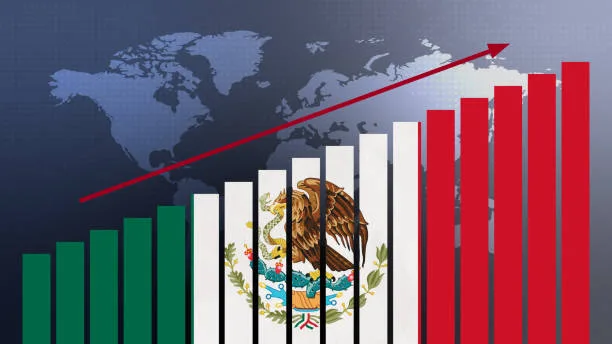How Foreign Reinvestment Became Mexico’s Strongest Bet in 2025
Jul 31, 2025 12:36:30 PM 4 min read

The global economic dynamic is undergoing a major realignment in value chains, and in Mexico, this phenomenon is clearly reflected in foreign direct investment (FDI) strategies. Far from being a passing trend, the consolidation of industrial integration in North America—driven by reinvested capital and the framework of the USMCA—is an undeniable reality that strengthens Mexico’s position as a strategic partner and global manufacturing hub.
 The first quarter of 2025 provides clear evidence of this trend, with Mexico attracting $21.4 billion
The first quarter of 2025 provides clear evidence of this trend, with Mexico attracting $21.4 billion
USD in FDI, a 5.4% annual increase, according to data from the Ministry of Economy. This figure is robust in itself, but its composition tells the real story: reinvested earnings accounted for the majority, with $16.6 billion USD. This not only reflects the confidence of foreign companies already operating in the country but also their strategic decision to expand and strengthen their local operations.
The manufacturing sector has been the primary driver of this investment, capturing $9.2 billion USD—43% of total FDI. Sub-sectors such as automotive, auto parts, and computing equipment have led this inflow of capital. This specialization is no coincidence; it responds to the growing need for companies to optimize supply chains and move closer to key markets—a process we all know as nearshoring.
How the USMCA Strengthens Mexico’s Role in North American Manufacturing
 The industrial integration of the North American region continues to deepen, with the United States-Mexico-Canada Agreement (USMCA) playing a critical role. The USMCA’s rules grant a substantial competitive advantage to products manufactured within the region. While the U.S. has raised tariffs on goods from other parts of the world, products that comply with the agreement’s provisions enjoy preferential access to the U.S. market.
The industrial integration of the North American region continues to deepen, with the United States-Mexico-Canada Agreement (USMCA) playing a critical role. The USMCA’s rules grant a substantial competitive advantage to products manufactured within the region. While the U.S. has raised tariffs on goods from other parts of the world, products that comply with the agreement’s provisions enjoy preferential access to the U.S. market.
This clearly positions the USMCA as an essential legal framework and a strong signal for investors. Unsurprisingly, investment—particularly in the industrial sector—continues to flow steadily.
The origin of FDI in Q1 2025 further reinforces the centrality of regional integration. North America (U.S. and Canada) accounted for 42.4% of total FDI inflows into Mexico, underscoring the strength of economic ties within the USMCA bloc and the interdependence of trilateral economic growth.
Geographically, FDI was concentrated in Mexico City, which led with $11.8 billion USD, followed by Nuevo León ($2.7B), the State of Mexico ($1.9B), Baja California ($690M), and Chihuahua ($700M). These regions—characterized by strong industrial and logistical infrastructure—accounted for nearly 84% of national FDI, confirming the presence of well-established and investment-attractive development hubs.
What the Numbers Don’t Show: The Real Risks Behind Foreign Reinvestment in Mexico
 While Q1 2025 figures are promising, it is essential to maintain a critical and cautious perspective
While Q1 2025 figures are promising, it is essential to maintain a critical and cautious perspective
regarding FDI expectations. FDI in Mexico has been widely regarded as a key indicator of nearshoring trends and a centerpiece of the government’s economic success narrative. However, a deeper analysis of FDI composition reveals important nuances.
The Ministry of Economy reported that in 2024, FDI flows exceeded $36.8 billion USD, up 2.3% from the previous year. Despite these high numbers, new investments—fresh capital entering the country—represented only 9% of total FDI in that period, the lowest proportion recorded in years. In contrast, reinvested earnings by foreign companies reached a record high of 78%.
This imbalance suggests that while existing investors have strong confidence in Mexico and are expanding their operations, the attraction of entirely new capital has declined. A healthy investment environment requires a balance between new investment and reinvestment, reflecting both the ability to attract fresh capital and the capacity to retain and grow existing operations.
The Future of Foreign Reinvestment: How Mexico Can Sustain Its Competitive Edge
Foreign reinvestment in Mexico—particularly in manufacturing—remains a powerful driver of regional integration and supply chain consolidation in North America. The USMCA continues to serve as a foundational pillar, offering Mexico a clear competitive edge. The data from Q1 2025 is a clear indication of sustained investor confidence.
 However, it will be important to closely monitor FDI composition, especially the balance between
However, it will be important to closely monitor FDI composition, especially the balance between
new investment and reinvested profits. Maintaining economic policies that encourage the inflow of fresh capital and diversify sources of investment will be key to ensuring that Mexico not only retains but enhances its appeal as a long-term strategic investment destination.
Regional consolidation is already underway, and Mexico is in a privileged position to lead—provided it manages expectations with a pragmatic and strategic approach.
Key Takeaways
-
Reinvested earnings are now the dominant component of FDI in Mexico, signaling long-term investor confidence.
-
The manufacturing sector—especially automotive and computing—remains the strongest magnet for capital.
-
The USMCA offers Mexico preferential market access, positioning it as a strategic industrial platform.
-
Regional hubs like Mexico City, Nuevo León, and Baja California continue to concentrate investment due to infrastructure readiness.
-
A sustainable FDI strategy requires balancing reinvestment with fresh capital attraction.
-
Mexico must maintain regulatory certainty, improve operational conditions, and defend the USMCA’s integrity to stay competitive in global manufacturing.
